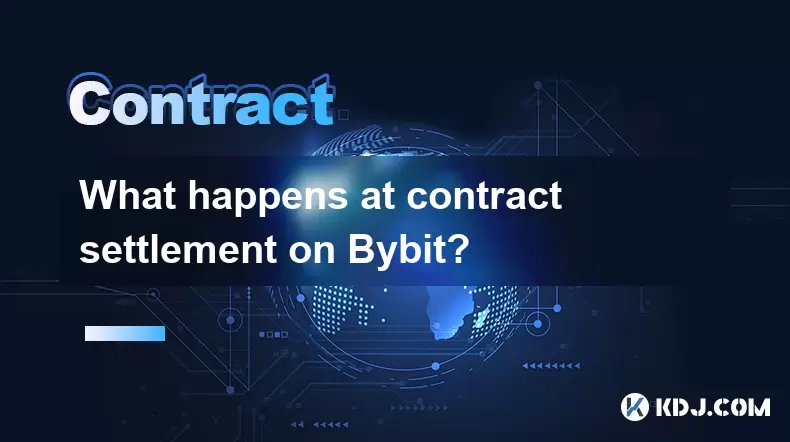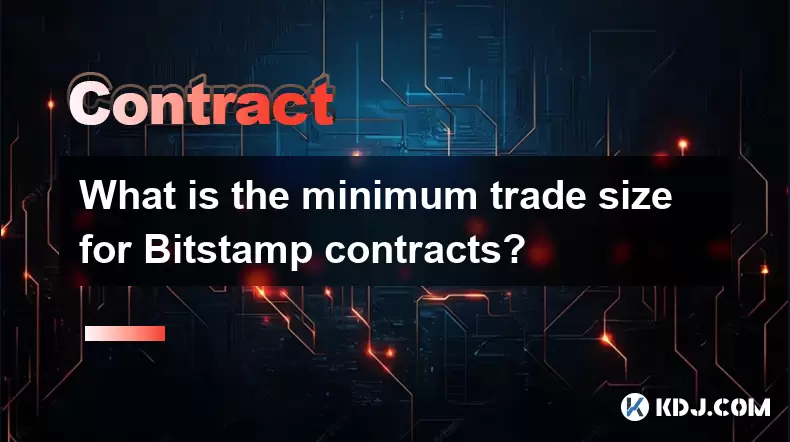-
 Bitcoin
Bitcoin $117900
-1.36% -
 Ethereum
Ethereum $3579
-3.25% -
 XRP
XRP $3.123
-11.35% -
 Tether USDt
Tether USDt $1.000
-0.01% -
 BNB
BNB $765.4
-1.41% -
 Solana
Solana $187.0
-6.55% -
 USDC
USDC $0.9999
0.00% -
 Dogecoin
Dogecoin $0.2376
-9.95% -
 TRON
TRON $0.3064
-2.32% -
 Cardano
Cardano $0.8027
-9.57% -
 Hyperliquid
Hyperliquid $43.20
-3.41% -
 Stellar
Stellar $0.4190
-10.58% -
 Sui
Sui $3.657
-7.55% -
 Chainlink
Chainlink $17.91
-7.84% -
 Hedera
Hedera $0.2438
-9.88% -
 Bitcoin Cash
Bitcoin Cash $505.9
-2.55% -
 Avalanche
Avalanche $23.63
-6.53% -
 Litecoin
Litecoin $110.9
-5.61% -
 UNUS SED LEO
UNUS SED LEO $8.969
-0.03% -
 Shiba Inu
Shiba Inu $0.00001368
-10.13% -
 Toncoin
Toncoin $3.155
-5.74% -
 Ethena USDe
Ethena USDe $1.001
-0.01% -
 Polkadot
Polkadot $4.082
-8.38% -
 Uniswap
Uniswap $9.951
-6.29% -
 Monero
Monero $309.9
-2.47% -
 Bitget Token
Bitget Token $4.656
-3.04% -
 Dai
Dai $0.0000
0.01% -
 Pepe
Pepe $0.00001253
-9.22% -
 Aave
Aave $287.4
-5.98% -
 Bittensor
Bittensor $419.3
-5.34%
What happens at contract settlement on Bybit?
On Bybit, perpetual contracts don’t settle; only inverse and expiring futures are settled at expiry, while funding payments occur every 8 hours to align prices.
Jul 23, 2025 at 06:15 pm

Understanding Contract Settlement on Bybit
When traders engage in perpetual contracts or inverse futures on Bybit, the term "contract settlement" may cause confusion, especially for those transitioning from traditional finance. In the context of Bybit, it's essential to clarify that perpetual contracts do not have a maturity date and thus are never settled in the traditional sense. Instead, what users often refer to as "settlement" is actually the process of funding payments or the liquidation of positions. True contract settlement only applies to inverse futures contracts, which have fixed expiration dates.
For inverse futures, settlement occurs at the predetermined expiration time. At this moment, all open positions are automatically closed based on the final settlement price, calculated using the average index price over a specific window before expiry. This ensures fairness and prevents price manipulation. The profit or loss is then credited or debited from the trader’s wallet balance in BTC (for USDⓈ-margined contracts, it’s settled in USDT).
Funding Rate Mechanism and Periodic Payments
Although perpetual contracts don’t settle, they incorporate a funding rate mechanism to keep the contract price aligned with the underlying spot market. This funding exchange happens every 8 hours at 04:00, 12:00, and 20:00 UTC. During these intervals, traders either pay or receive funding depending on whether they hold long or short positions and the current funding rate.
The funding rate is composed of two parts: the interest rate and the premium. On Bybit, the interest rate component is usually close to zero, so the premium dominates. If the funding rate is positive, long position holders pay shorts. If negative, shorts pay longs. This transfer is automatic and executed directly between traders—Bybit does not profit from it.
To view the upcoming funding time and rate:
- Navigate to the contract trading page
- Locate the funding indicator beneath the price chart
- Hover over or click it to see the exact time remaining until next funding and the current rate percentage
These periodic transfers are critical for maintaining price equilibrium and should not be mistaken for settlement.
Liquidation vs. Settlement: Key Differences
Traders sometimes confuse liquidation with settlement, but they are fundamentally different processes. Liquidation occurs when a trader’s margin falls below the maintenance threshold, triggering an automatic closure of the position by the system. This is a risk management feature, not a scheduled event like settlement.
In contrast, settlement on Bybit for inverse futures happens only once—at expiry. During liquidation:
- The position is closed at the liquidation price
- A portion of the margin is lost, potentially including the entire initial margin
- An insurance clear fee may apply if the liquidation results in a debt
Settlement, however, involves no penalty. It is a neutral process where all outstanding contracts are resolved at the mark price derived from the index. Traders must monitor their expiring futures positions and either close them manually or allow the system to settle them automatically.
Steps Involved in Futures Contract Settlement
For quarterly futures contracts on Bybit, settlement follows a precise sequence:
- Ensure your position remains open past the countdown timer visible on the trading interface
- As the expiry approaches, the system begins calculating the final settlement price using a 30-minute time-weighted average of the index price
- At the exact expiry time, all open positions are closed at this final price
- Profits or losses are immediately reflected in your wallet balance
- The settled contracts disappear from the open positions tab and appear in order history or transaction records
No action is required to initiate settlement—it is fully automated. However, traders can avoid automatic settlement by closing their positions manually before the expiry time. This allows control over exit pricing and timing.
Post-Settlement Wallet and Ledger Updates
After a futures contract settles, Bybit updates several internal systems to reflect the outcome. Your wallet balance changes based on the realized P&L. For BTCUSD quarterly contracts, the settlement asset is BTC, so gains or losses affect your BTC balance directly.
Check your updated balance by:
- Going to the Assets section
- Selecting Wallet or Account Overview
- Filtering transaction history by Derivatives or Futures Settlement
Additionally, the Profit & Loss (P&L) statement in the account history will show the exact amount credited or debited. These records are vital for tax reporting and performance tracking. Note that settled positions no longer contribute to open risk metrics such as maintenance margin or leverage exposure.
Common Misconceptions About Settlement on Bybit
Many new users assume that all derivative products on Bybit undergo regular settlement. This is incorrect. Only inverse futures and USDT-margined futures with expiry dates settle. Perpetual contracts, which make up the majority of trading volume, operate indefinitely.
Another misconception is that settlement implies fees. Bybit charges no settlement fees. Any cost incurred comes from trading activity, such as taker/maker fees or funding payments, not from the settlement process itself.
Some also believe that settlement resets account status or affects other open positions. In reality, settlement only impacts the specific contract series that has expired. All other positions, balances, and orders remain unaffected.
Frequently Asked Questions
What time does Bybit settle futures contracts?
Bybit settles quarterly futures contracts at 12:00 UTC on the last Friday of each quarter. The exact date depends on the contract specification, such as the March, June, September, or December expiry cycle.
How is the final settlement price determined?
The final settlement price is calculated as the 30-minute time-weighted average price (TWAP) of the underlying index prior to expiry. This method prevents last-second volatility from distorting the settlement value.
Can I withdraw funds immediately after settlement?
Yes. Once the settlement process completes and your wallet balance reflects the updated amount, you can withdraw funds normally, subject to standard withdrawal limits and security checks.
Do I need to manually close my futures position before settlement?
No. If you leave a futures position open past expiry, Bybit will automatically settle it. However, closing manually beforehand gives you control over the exit price and timing.
Disclaimer:info@kdj.com
The information provided is not trading advice. kdj.com does not assume any responsibility for any investments made based on the information provided in this article. Cryptocurrencies are highly volatile and it is highly recommended that you invest with caution after thorough research!
If you believe that the content used on this website infringes your copyright, please contact us immediately (info@kdj.com) and we will delete it promptly.
- Dogecoin's Resistance Retest: Parabolic Move on the Horizon?
- 2025-07-24 04:50:13
- WLFI, Vaulta Token, and Holdings: Navigating the Web3 Revolution
- 2025-07-24 05:30:13
- BlockDAG, Dogecoin, and the $350M Presale Frenzy: What's Hot Now?
- 2025-07-24 04:50:13
- Ethereum, Meme Coins, and Presale Funding: What's the Hype?
- 2025-07-24 05:30:13
- Ethereum Meme Coin Presales: Hype or the Future?
- 2025-07-24 05:35:13
- ADA's Rocky Ride: Support Levels and Open Interest Under Scrutiny
- 2025-07-24 05:35:13
Related knowledge

Why is my Bitstamp futures position being liquidated?
Jul 23,2025 at 11:08am
Understanding Futures Liquidation on BitstampFutures trading on Bitstamp involves borrowing funds to open leveraged positions, which amplifies both po...

Does Bitstamp offer inverse contracts?
Jul 23,2025 at 01:28pm
Understanding Inverse Contracts in Cryptocurrency TradingIn the realm of cryptocurrency derivatives, inverse contracts are a specific type of futures ...

How to find your Bitstamp futures trade history?
Jul 23,2025 at 08:07am
Understanding Bitstamp and Futures Trading AvailabilityAs of the current state of Bitstamp’s service offerings, it is critical to clarify that Bitstam...

Can I use a trailing stop on Bitstamp futures?
Jul 23,2025 at 01:42pm
Understanding Trailing Stops in Cryptocurrency TradingA trailing stop is a dynamic type of stop-loss order that adjusts automatically as the price of ...

What is the minimum trade size for Bitstamp contracts?
Jul 23,2025 at 07:14pm
Understanding Bitstamp and Its Contract OfferingsBitstamp is one of the longest-standing cryptocurrency exchanges, established in 2011, and known for ...

How to trade ETH perpetuals on Bitstamp?
Jul 23,2025 at 03:28am
Understanding ETH Perpetual ContractsETH perpetual contracts are derivative products that allow traders to speculate on the price of Ethereum without ...

Why is my Bitstamp futures position being liquidated?
Jul 23,2025 at 11:08am
Understanding Futures Liquidation on BitstampFutures trading on Bitstamp involves borrowing funds to open leveraged positions, which amplifies both po...

Does Bitstamp offer inverse contracts?
Jul 23,2025 at 01:28pm
Understanding Inverse Contracts in Cryptocurrency TradingIn the realm of cryptocurrency derivatives, inverse contracts are a specific type of futures ...

How to find your Bitstamp futures trade history?
Jul 23,2025 at 08:07am
Understanding Bitstamp and Futures Trading AvailabilityAs of the current state of Bitstamp’s service offerings, it is critical to clarify that Bitstam...

Can I use a trailing stop on Bitstamp futures?
Jul 23,2025 at 01:42pm
Understanding Trailing Stops in Cryptocurrency TradingA trailing stop is a dynamic type of stop-loss order that adjusts automatically as the price of ...

What is the minimum trade size for Bitstamp contracts?
Jul 23,2025 at 07:14pm
Understanding Bitstamp and Its Contract OfferingsBitstamp is one of the longest-standing cryptocurrency exchanges, established in 2011, and known for ...

How to trade ETH perpetuals on Bitstamp?
Jul 23,2025 at 03:28am
Understanding ETH Perpetual ContractsETH perpetual contracts are derivative products that allow traders to speculate on the price of Ethereum without ...
See all articles

























































































